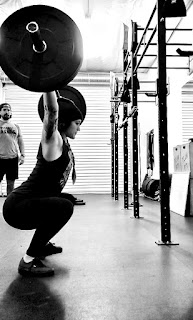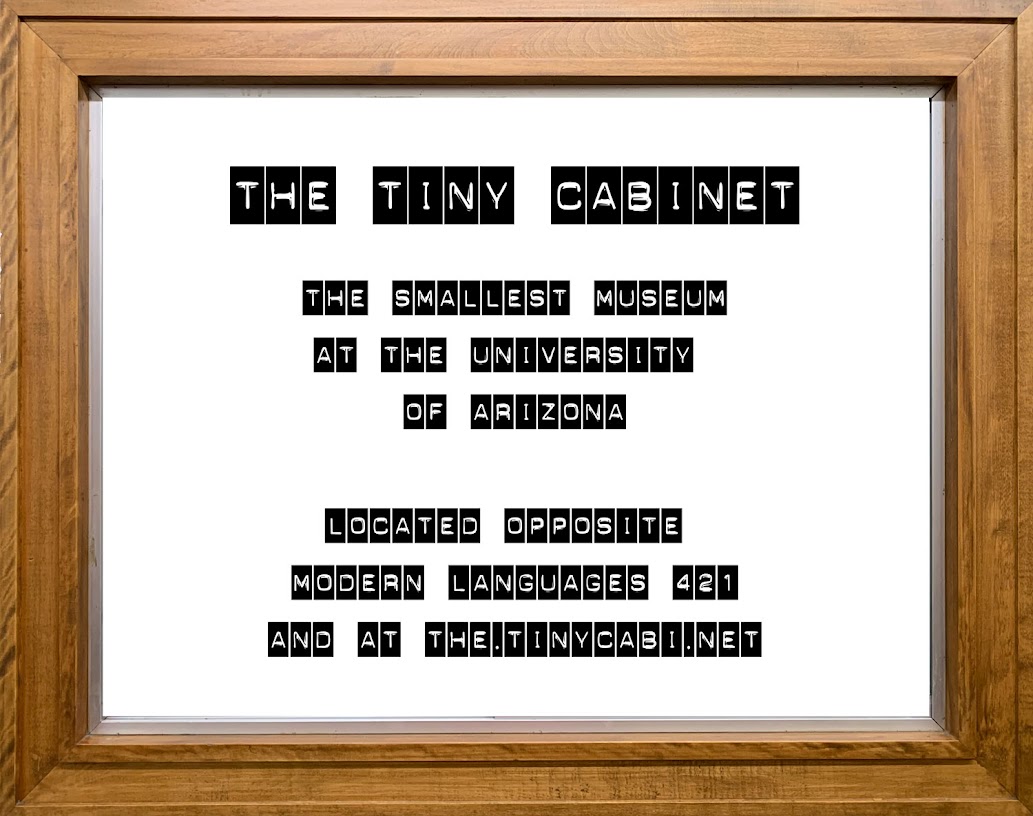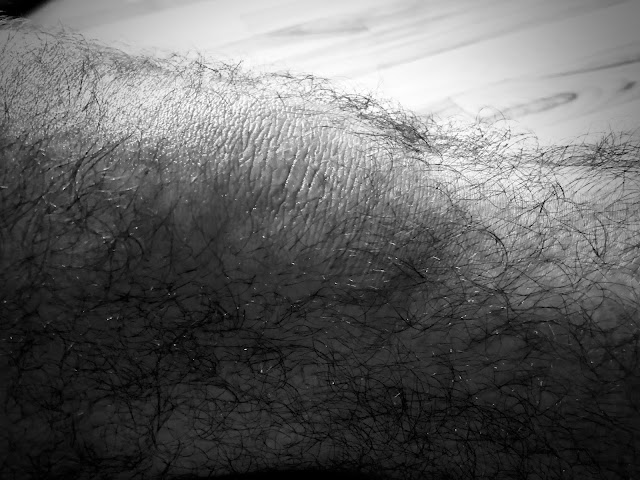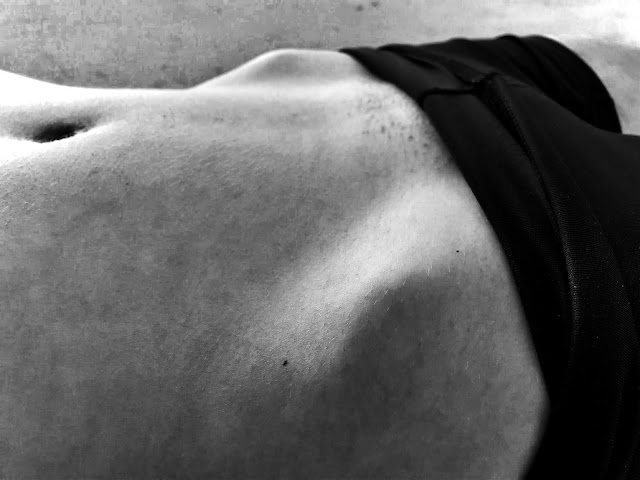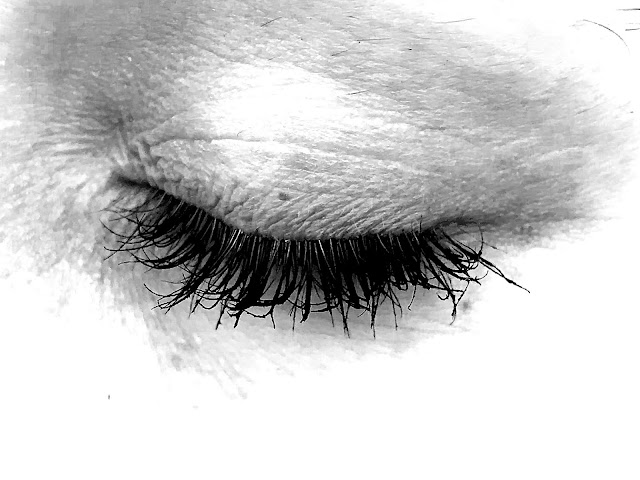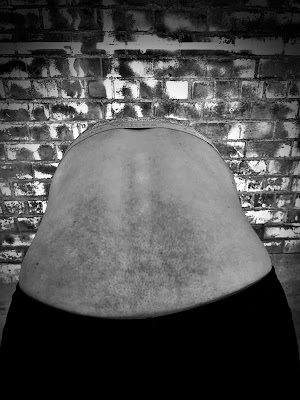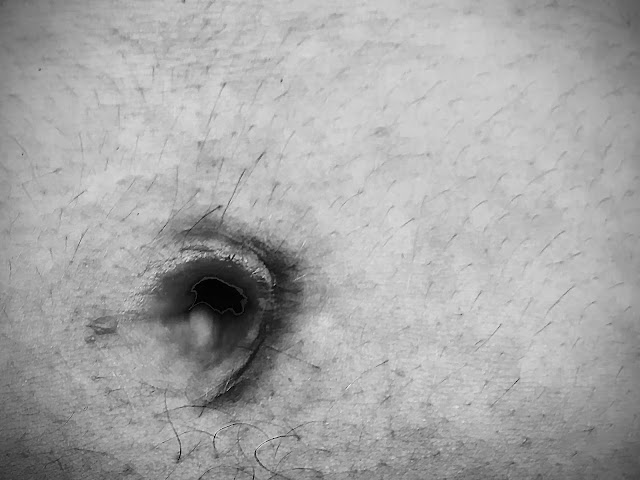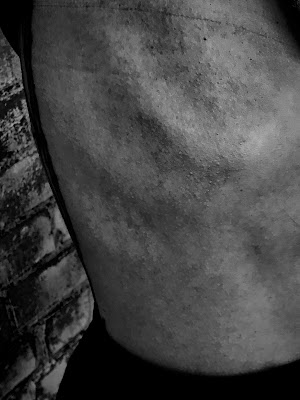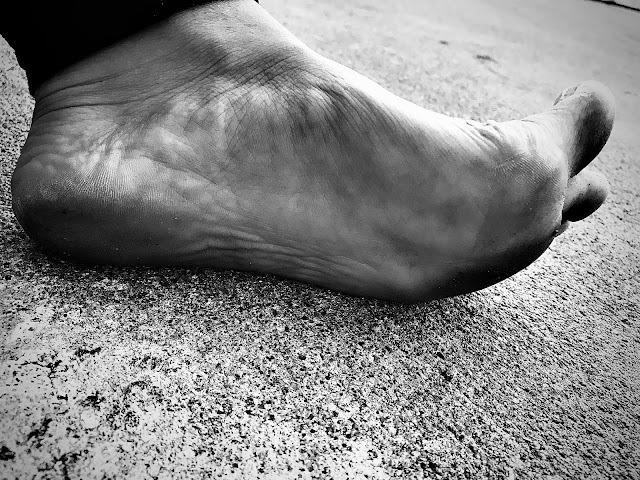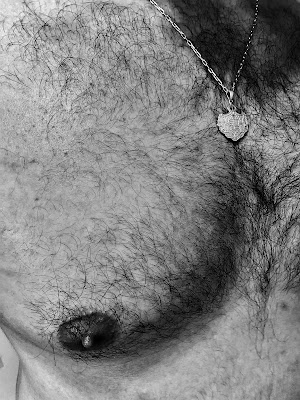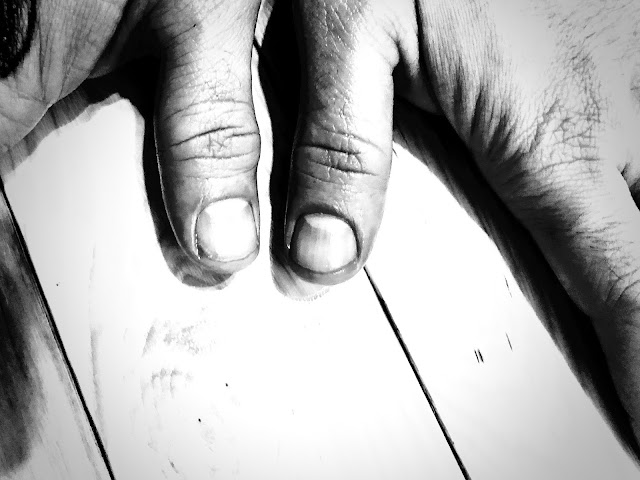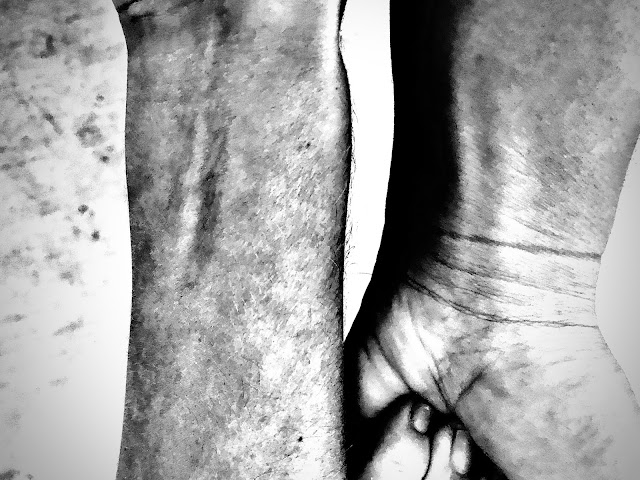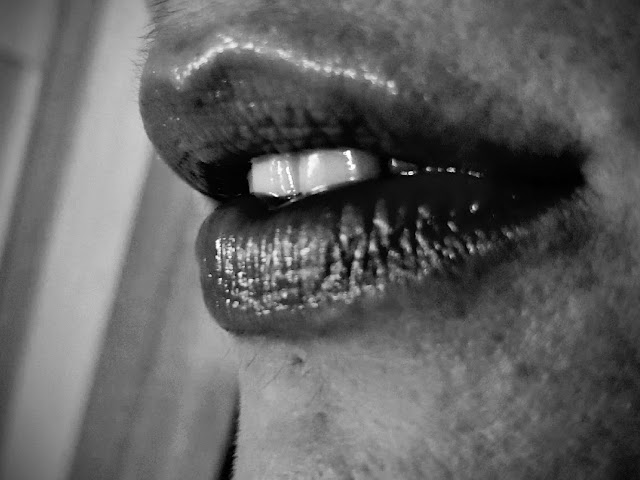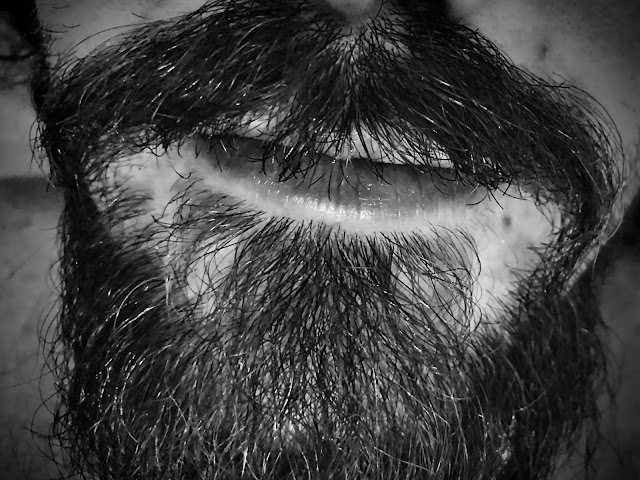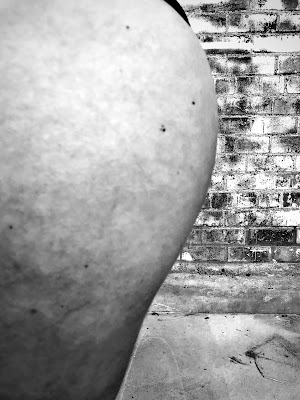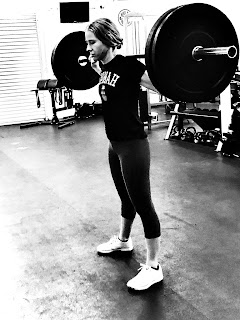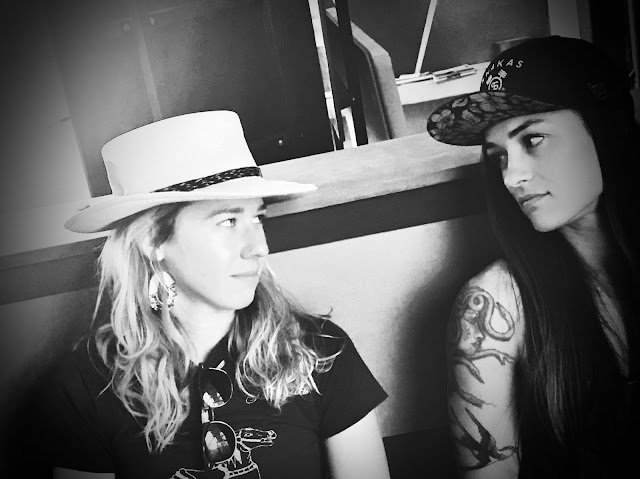FAKE BODY FACTS:
A CONVERSATION
(LUCY KIRKMAN/MARGO STEINES)
1. PATELLA
MS: A kneecap is a tiny teacup floating on a table setting which disregards the pestering of gravity and moves, fully moored, through space and time. Bone white is the swatchiness of the patella, millions of lengths of baseboard and crown molding can thank it for their soothing, yet stain-resistant, tone. A patella can detach from its motherboard, spaceship rising shifty, slinking like clot, deep knee thrombosis, reduce to the size of a grain of pastini, weave through tendon and ligament, dodge between greater bones like small zippy engines, weary, weavy, jagging into capsular voids, stretching into the voidyness of the iliac bursa, growing fatter and wider: a floating knee
LK: Questions about the body manifest as questions about other things, things that demand answers in a more urgent way. What will I eat? What will I wear? What will I buy? How will I move? Will I move? Will I go to the gym?
2. ILIAC CREST
MS: The Alps of the hips jut up and out, one palm-shaped handle for each of two large calloused hands, peaks driving away from the body’s hotwet core and pushing out against skinwrap, against the dermal sky, studded with twinkly capillaries, pressing into a place where matter meets sky. On Everest that interstice is called the Death Zone, where cloud and earth become confused about their roles, where air is so thin it is not really air any longer, just that which is wearing its jacket. Atop the iliac crest there are no clouds but there are chips, plinked off shell layers flaking musselly into pearl glazed shards.
LK: Some questions are the kinds of questions that leave you sweating and panting and muscles aching for days. I lift and run then stretch to try and ease the pain. I do the circuit. I end up in the same place I started. The control of numbers and weights. One hundred pounds, one hundred and five, one hundred and fifteen. GET UNDER IT! Capacity and potential feel like an illusion, because they are infinite but infinitely unachievable, and the gym is the place where there are no answers, only questions and control.
3. HAMSTRING
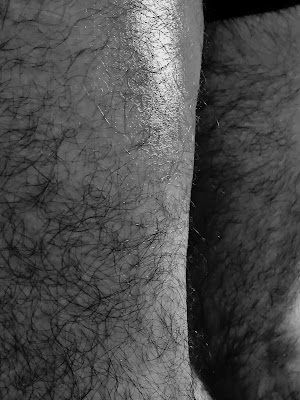
MS: To string a ham is a quick process for a deft hand but a flailing mess for a first timer. Cross the ankles, as if they were skirting under an evening gown, bind them together like a lash of kindling. Run, next, your rope around itself three times at the place where it crosses over itself between the two ankles. You have made an eight, or infinity, or a mistake. Now throw your hank over a beam or a solid pipe or the branch of a very certain tree, catch it on the other side, pull down hard with the motion of stabbing a ski pole into the snowbound earth if a downward grade suddenly pulled up level like a lame horse. Pull pull pull, and when your pig that is not yet a ham points its toes high enough, half hitch the tail of your rope to the eight, or the infinity, or the mistake. If you can’t tie a knot, tie a lot. Now you will feel, if you grasp the thighbacks of your not-yet-a-ham, the coiled power of the butt and the legs meeting in this long pushy cable of meat, how it is a string and yet not a string, a rope and yet not a rope. You can watch, if you are patient enough and have practiced with plenty of boily pots, the striated ribbons of becoming-ham pull out and away from themselves, become longer and stringer and crampy, and when you rise quickly from a kneel to a stand, pushing the ground away with your own thighs, I dare you to say hamstring ever again without feeling a deep pully yank, without feeling your knees and your butt connected with some of god’s own bondage.
LK: Will I go to the gym?
4. PALPEBRA
MS: The remarkable engineering of a convex hood, thin as a potato chip and sometimes as seethrough, that can windshield wiper the eyeball in all manner of windstorm and salt spray and highway grit extravaganza, should receive more press, more attention at the national, international, global, planetary, interstellar level. We should be talking louder and more often about this delicate bowl of squish and squeegee. There is plenty more to say, and more to learn.
LK: My body changes shape in the mirror, but so do my eyes, my head, the shape of my thoughts about my body.
5. VERTEBRAL COLUMN
MS: A spine is a tired snake, and also an ambitious tree; a slack rope, and also a length of rebar. Depending on the day and the mood and other factors (like: latitude, longitude, willingness to swallow gummy capsules of ocean oil with hot gulps of black coffee, the ergonomics of your work, how squarely you have faced the truths of your own fearfulness) a particular spine might enter the world like a wrigglebacked caterpillar, each piece operating with cheerful independence, or like straight bendy conifer, defined by root and tip but open to discussion in between, or like a splintery and furious length of driftwood, ready to break altogether before allowing any movement.
LK: I have a purple half-moon scar circling the left side of my belly-button, through which a surgeon directed a thin metal endoscope, equipped with a video camera and miniature surgical instruments, to cut out and remove my appendix. The idea that the appendix is a vestigial organ, and no longer useful to the body, is being slowly disproven as it shows that the appendix contains a store of gut bacteria unique to each person. When the microflora within the gut is wiped out by an infection, a virus, antibiotics, etc. the stored bacteria within the appendix repopulates the gastrointestinal system. Is the microbiome the seat of the soul? Highly unlikely said the slick looking surgeon, during his pre-surgery brief. He looks like a serial killer, American psycho. We talk some more, and I tell him my friend is doing her PhD in religious studies and she wouldn’t be happy that I’m getting my appendix taken out. He smirks: Religious studies? And as he leaves, over his shoulder: Don’t worry, I won’t take out your soul.
6. APPENDIX
MS: Sometimes it is not possible to say all the things one wishes to say in one sitting or session or speech or tome. Often, l’esprit d’escalier strikes, and we have a note of thanks or explanation or followup to tack on. When this happens north of the pelvis and south of the gullet it is an awkward need to manage, because square footage has been doled out already, and there are not lots sitting empty or undeveloped. Take, now, a small pouch, craft it of deerskin or polymer or coconut husk. Fill it with your left-unsaids, your don’t-forgets, your also-these. Fill it so full it lives in perpetual anxiety of overfilling, churn and swirl it so it remembers it is alive. Do not give it any busywork like the others, and trust in its delicacy: if its seawalls crumble or its innards roil, thank it for its service, retire it with flag and bouquet, trust that it has performed its duties, and move along.
LK: The doctor cannot tell me if it was completely necessary to take out my appendix in the follow-up appointment. Could I have taken a course of antibiotics? Maybe. Would it have worked? Maybe. Would I still have had to get it taken out after the antibiotics? Maybe. No exercise for four weeks. No lifting, no yoga. You’re young and will heal quickly so after two weeks you can do some cardio. I do a handstand against my kitchen wall that evening, and feel a gentle pain in my abdomen as I try to fall asleep. I cannot tell if it was imagined or real, but I spend the whole night waiting to start vomiting with pain, with the contents of my gut leaking out into my abdominal cavity through burst stitches. This did not happen, but I woke up tired.
7. INTERCOSTAL MUSCLE
MS: Slaughter a lamb once and a rib will never again be just a rib. The shallow sheet of rainbowsheen fiber that runs over and under the ribcage, laminating the pokiness of the whole bone collection into a single sleek suit of armor is strong, very strong, unlikely to tear unless presented with thin sharp (knitting needle, chopstick, flagpole, drill, boning knife) or with simultaneous wrenching and tear, the thinnest parts stretching even thinner, some light pixelating through, a tissue spread over the lip of a glass with steam rising from hot liquid, suddenly sheet becomes pulp and between the ribs your neat coat of arms fissures into a sad covering that holds too much whippy draft to protect against any of the elements. It is very cold to wait for a winter train wearing such a garment.
LK: Sometimes in the gym there are those moments where control loses its grip and I am crying and the salt from my tears runs down my face with the rivers of salty sweat and perhaps I am choking -- it feels like I am choking. As soon as someone comes over to see if I am alive I snap straight, wipe my face with my shirt: I’m fine. And try again.
8. CLAVICLE
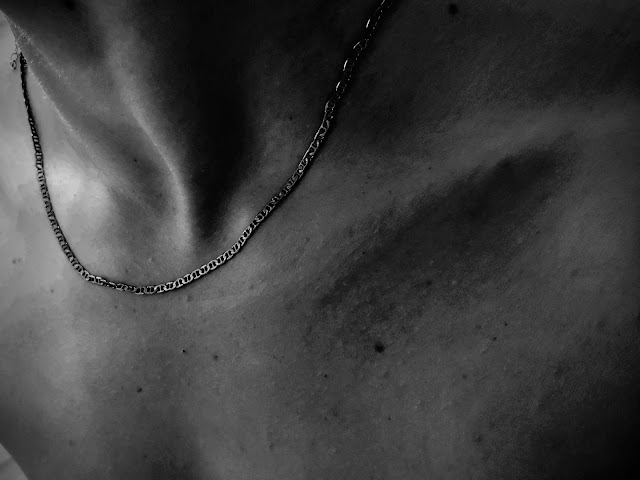
MS: If you are very slim this will jut like a small mountain range too tall to receive much ground cover, or like bones covered in a very thin layer of skin. Sometimes an object is not a metaphor. The clavicle searches up, reaching skyward, pressing out from the hot core of you towards starry cloud of sky. The clavicle is vulnerable to steering columns and fore-headbutts and makes a perfect tidepool for tiny lakes of seawater, rainwater, bathwater. Stand perfectly still if you wish these pools to heat or cool to the temperature of the rest of you, stand perfectly still and feel for swimmy amoeba making tentative eye contact with each other, brushing their bellies against the tiny fluffs coming off the surface of your skin, waving at the floor of the depths like seagrass and anemones. They will seek the belly of this trench the way all things seek to plumb depths and touch skies. The middle of a thing is a dull and dreary place. The middle of a thing is where beige dangers creep up unsuspected. The middle of a thing can drown you despite all the warning in the world.
LK: The questions that come up in the gym are ones of movement, how to move efficiently and effectively. Waste no extra energy. Or do? It is good to feel depleted, to feel tired, to feel that work has been done. The work that is done is then, hopefully, manifest in a product: the body, which can be infinitely improved.
9. PLANTAR FASCIA
MS: String a guitar too tight and it plays springy tinny bongo bounce, string a foot too tight and it plays high pitch high key soprano squeak, every step a further tightening of what should be free and a slackening of what should be taut. The invisible pain of a furious sole is louder than the visible pain of a blackened eye, but no one worries over it, not even you, who teeters on this poorly strung platform of distress and smiles with your teeth pressed into your softmeat cheeks.
LK: Will I go to the gym? Or will I run?
10. PECTORALS
MS: We learn of these from Ken dolls, and what we learn is that they should be pronounced but flat, broadly visible, as if the heels of two wide square loaves of firm bread had been placed carefully northeast and northwest of the heart. From the ruined bodies of men who hate themselves we learn that they can be nearly absent, a sheety flatness under a tattered nipple, white like chicken breast and littered with embarrassed looking hair. A man can appear strong in some clothing if he has girthy arms, but in the gazey brightness of daytime nudity, he can never look strong without the cresty curve between his throat and his belly, his unashamed nipples perched overtop low sloping hills. A strong pectoral shelf is useful if you find yourself drowning or on fire in a shallow pit, and if for these or other reasons you must be bench pressed to safety. In such moments a man with a chest is invaluable.
LK: A firefighter I know spends three and a half to four and a half hours working out everyday, as part of his work day. He is a part of a team of firefighters that get sent all across the country during the fire season, the summer, and they haul chainsaws and tools and other heavy things up and down mountains. They go where there are no roads. His body is lean and muscled, each part of his body defined by the work it does. I run my finger up and down his abdomen -- I can feel each of his abdominals as he exhales.
11. POLLEX (a)
MS: King of the fingers, lord of the hands, hitcher of hikes, uppy or downy with a smile or a frown. Try not to lose these, they are vital to such tasks as gripping the speckled cast iron of a panhandle, grasping the meatiness of a strong thigh, carrying a bundle of celery. Without a thumb you are left with your trunk, your fingers, and pressure, a tiring enterprise if you wish to lift and hold anything greater than small vegetables. A thumb fits easily in a mouth, an ass, an eyesocket, but rarely in an ear.
LK: Nobody loves pain except for those people who love pain and pursue it because they haven’t had enough of it, or too much, perhaps, or because their brains need it to understand something about reality. This understanding is not real, and completely. The pain is a lens through which things can make sense. Pain pulls you into the body, and the body becomes everything, the body becomes the thing that interacts with the environment. The self/mind is quiet. Striving is something that can be measured by pain. But it is a slippery marker of success because there is no upper limit, except for perhaps death or complete numbness (the same thing).
12. POLLEX (b)
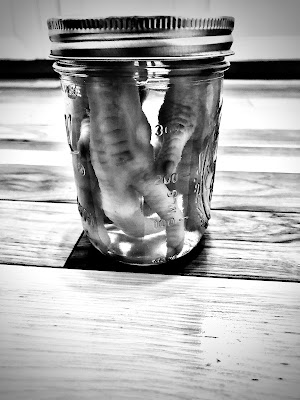
MS: A thumb is always a finger but a finger is not always a thumb. Put it up and get a ride, put it down and stake a claim. Suck it and stay stuck in some early stage described by a man who, to be gentle, had some of his own stuff going on. The fingerness of a thumb is obvious but it is never, ever eclipsed by its essential thumbness. Things we can do with our thumbs supposedly separate us from The Animals (by which we mean the ungodly ones, by which we should mean just the other animals). But the orangutan. But the gorilla. Thumbs aplenty, but sitting dopelike in a cage or a field, idly thumbing their ass and swiping at their mouths—we don’t do those things. Not in public, at least. An opposable thumb allows for the use of tools, allows for the creation of hand signs, signals, language, allows for writing and typing and sex that makes clear a difference between touch, the verb, as in, he touched me, and touch, also the verb, as in, our bodies touched each other and touch, the nounish, as in, you don’t need a thumb to experience the touch of another body.
LK: The problem with “fitness” is that in biology it means the quality of being able to survive and reproduce. It is inherently the quality of being able to do the things that enable ongoing existence relative to the environment. But what does it mean to survive in a world where our livelihoods (mine, at least) are not dependent on physically triumphing over others or the environment?. In the gym there is talk of “functional fitness” which translates into a kind of physical fitness that equips us (the gym-goers) to be able to be functional in everyday life. Like, they say, if you were stranded and you had to run a mile (or three or more) or lift another person or lift an object in order to save someone’s life. But can you really prepare for those kinds of things? Somewhat. But what about other things? The day to day. I bike to campus, some days faster and some days slower. I can lift my groceries out of my car, I can walk downtown to the bars. I am lucky to have all the fitness I need, being relatively healthy, even without the gym, based on the physical demands of my lifestyle and environment. I still pay money for sweat.
13. CALCANEUS
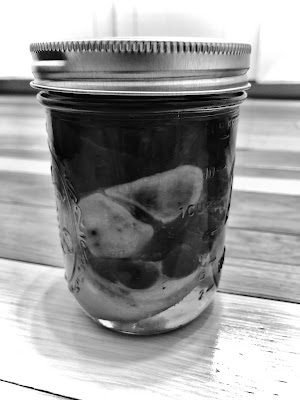
MS: The cup of the heel, part of a complex system of levers and rods, part of a complex structure that negotiates with gravity and surface, part of a sack of sticks contained within a small bag of meat. The foot is the thing that moves us around and yet we tend to ignore it until it becomes painful. The calcaneus holds, like a cup, hopes and dreams and intentions: move here, get there. It is very difficult to move without a foot—even in the typical car. Cup your desire to get up and walk across the room to tuck a piece of curled hair behind your lover’s ear. Cup your desire to cross an ocean on an airplane and never return. Cup your desire to run next to a dog, gentle thumps of paws in rhythm: theirs, yours. If your calcaneus cracks you can still run, for a while. Pain will refer up your leg and to the front of your ankle, pain will confuse you. You can shatter this bone, but why would you, if you could instead break it gently, one strike at a time, body against ground on this tiny flatness, this heel?
LK: My oldest friend has left me for the gym. She no longer tolerates my bad behaviour. Truly disgusted, she stares into my eyes and asks earnestly, “How could you?” when she sees me smoking for the first time in years. She talks in terms of “functionality,” “macros,” and “modalities.” I do not care for this. I care only for aesthetics. Tell me how.
14. CARPAL TUNNELS
MS: Things that have apertures wide enough to sail a thing through them: straws, Twizzlers, copper piping, the more robust pastas—your ziti, your rigatoni. Things that are too clogged and narrow to allow passage: New England plumbing on a bad day, carpal tunnels. Once there were tiny boats drifting fore and aft, once there were dinghies, outrigger canoes, elaborate junks. But over time the speakiness of these vessels grew too loud and clamorous. Dams erupted out of nowhere, boats crashed, souls drowned. Blockage became typical and crash sites were no longer cleared, not for tugboats, not for Zodiacs, not for anything. Hot tinglepain can slice under the surface, beneath wreckage and crams, beneath shattered pieces and soggy limbs, and so the carpal tunnel becomes a tunnel for justpain, for hotness stabbiness burniness: one lane only.
LK: Parts of my body that I love:
Femur: the strongest bone in the body.
Ribcage: the thing that protects the heart.
15. VERMILION
MS: If the core of a body is the selfiest self and the outside environment is other, then the lips are negotiators between. Are you within me or are you without me: lips ask this question incessantly, so steady and low and constant that at times they must be broached only to silence them, a jagged stab of outside-coming-in the only thing wild and fast enough to ensure a moment’s rest. Close the curtains, slam the door, purse the lips. When children are furious they seal their lips closed and refuse to eat. When women are not eager we stay dry and closed. When we hunger—women, children, mouths, cunts—we go wide and balmy, our doors flung open, our consideration of where we end and the world begins temporarily set aside in favor of some terribly dangerous mixing. Bring the outside in, let the inside out, it is okay, we can sort it out later; borders tell us lies like that: lies about future safety.
LK: Perhaps I will begin to record the time I spend inspecting my body for ingrown hairs. This is my favorite thing to do, but it makes me sad.
16. GLUTEI
MS: Triplets, here: medius, maximus, minimus. Together are important to make the leg work for such things as walkingrunningstrollingsprinting, also jumping, also running away, also standing still and absorbing the impact of the moment. Ask your hip pain about middle child syndrome. Ask your awkward gait about family dynamics, sibling rivalry, the rule of thirds. If the torso is the self and the legs are its propellants, the glutei are the stagecoaches in between, flexing and going slack many thousands of millions of times in their lives. Start round and puffy, bounced up and springing out, gently fall, sad, rise again like bread dough under the pressure of enough labor, but, eventually, still, fall.
LK: Questions of my ongoing existence feel more abstract: financial, emotional, logistical. My passport. Emotional survival, which too is survival, is related to fitness, though; endorphins bring a kind of emotional stability that is difficult to find elsewhere. Science will back me up. But there are those moments of movement, few and far between, where the body does what the brain asks it to, and those are beautifully sweet. A handstand. Jumping rope.
#
